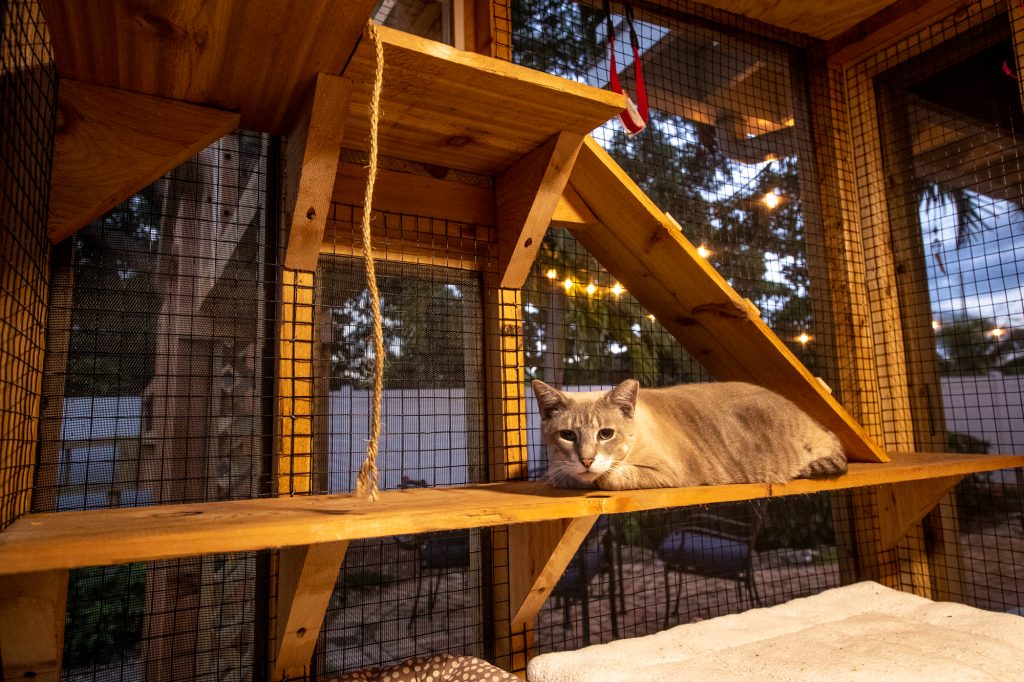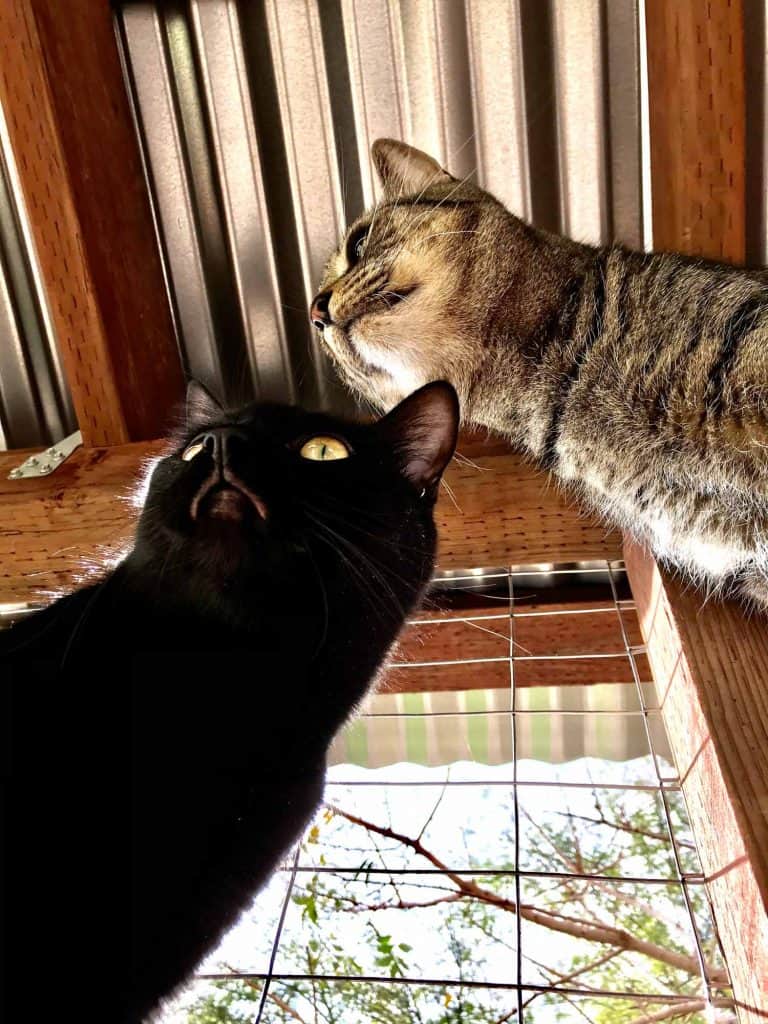Creating a Catio for Special Needs Cats
For many cat owners, their feline friends are more than just pets – they’re a crucial part of the family. However, for cats with special needs, providing them with the care and attention they need can be a challenging task. One way to ensure that your special needs cat has the best possible quality of life is by creating a catio – an outdoor space that’s designed specifically for your cat’s needs.
There are many different types of special needs cats, and the specific accommodations you’ll need to make in your catio will depend on your cat’s specific needs. Here are five examples of special needs cats and the types of accommodations we recommend at Cat Topia when constructing a catio for them:
Fine Tuning the Catio for Cats with Special Needs
1: Cats with mobility issues
If your cat has mobility issues, such as arthritis or a spinal injury, you’ll need to make sure your catio is easily accessible and has a smooth surface. This means avoiding uneven surfaces or sharp objects that could cause your cat to trip or fall. You may also want to consider installing ramps or stairs to help your cat get around, or adding a platform for your cat to rest on. You may also want to consider adding a litter box that is easily accessible to your cat, as well as food and water bowls that are at the appropriate height for your cat to reach.

2: Cats with sensory impairments
Cats with sensory impairments, such as vision or hearing loss, may have trouble navigating a traditional catio. To make your catio more accessible for these cats, consider adding simple ramps and walkways to locate important areas, such as the litter box or food and water bowls. You may also want to consider installing a bell to alert your cat to your presence or adding additional lighting to help your cat see better. It’s also a good idea to keep the layout of your catio simple and easy to navigate, to minimize any confusion or disorientation your cat may experience.


3: Cats with respiratory issues
If your cat has respiratory issues, such as asthma or allergies, you’ll want to make sure your catio is a safe and comfortable place for them to spend time. This may mean installing filters or air purifiers to remove allergens from the air, or choosing plants that are known to be hypoallergenic. You may also want to avoid using any chemicals or pesticides in your catio, as these can irritate your cat’s respiratory system.

4: Cats with chronic pain
Cats with chronic pain, such as those with cancer or chronic inflammation, may benefit from a catio that provides a comfortable and stress-free environment. This may mean adding soft bedding, plenty of hiding spots, and plenty of opportunities for your cat to rest. You may also want to consider adding a heated pad or blanket to your catio, to provide your cat with additional warmth and comfort.
5: Cats with behavioral issues
Cats with behavioral issues, such as aggression or anxiety, may benefit from a catio that provides plenty of mental and physical stimulation. This may mean adding interactive toys, scratching posts, and plenty of opportunities for your cat to play and explore. You may also want to consider providing your cat with access to a variety of different environments, such as areas with grass, dirt, or sand, to help keep your cat’s senses engaged and their minds occupied.

No matter what type of special needs your cat has, there are plenty of ways to create a catio that meets its needs and allows them to live a happy, healthy life. By taking the time to consider your cat’s specific needs and making the necessary accommodations, you can create a catio that’s the perfect fit for your feline friend.
